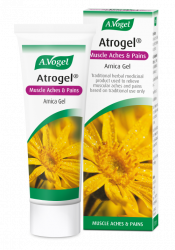Calf strain in runners
As you are running you feel a tightness in your leg. You think 'Perhaps I haven't warmed up enough, I am sure it will loosen as I go'. Next, you feel a twinge at the back of your leg and think 'I will just keep going for a few more minutes'. The pain shoots from your heel up the back of your leg to your knee and you think 'I should maybe just rest it for a bit'. You take a quick break and start jogging again but all too soon your leg has become too painful to even hobble along.
The problem that has cropped up here is calf strain. To find out more about this issue, this blog will answer the following questions:
- Why does calf strain occur?
- When can I start running again?
- What can I do to ease pain and speed up recovery?
- How can I maintain fitness whilst recovering?
- What can I do to prevent injuries from reoccurring?
Why does calf strain occur?
Calf strain among runners is extremely common and often occurs as a result of over-exertion when running or from not warming up muscles properly before a run. In particular, starting to run too soon after an injury causes the most severe and lasting injuries. Knowing when it is safe to start running after a calf strain, and how to build up to full power again, should help you get your trainers back on as quickly and safely as possible.
When can I start running again?
As much as I’d love to be able to give a black and white answer to this, it really depends on the type and severity of your calf strain, and also on the amount of running that you do. This is why it is often best to speak to a medical professional, such as a physiotherapist, when you injure your calf. They will help you to understand the severity of your injury and help you plan your return to running.
In very minor cases, such as when the muscle is slightly inflamed but no muscle fibres have been torn, resting for a few days and applying heat treatments should be enough to ensure that you do not worsen the strain. Only return to running when you feel no pain or twinges in the muscle, and rather than trying to run the same distances you were running before the injury, break in gently, running a shorter distance at a slower pace.
More severe cases of muscle strain will require more care and attention. It can take 4-12 weeks before you are fit to run again. As with minor strains, you should only begin to run once your leg is completely pain free. This may take some time, but it is important to allow your leg to heal fully before starting to run, otherwise you will exacerbate the injury and delay recovery. With severe injuries, it is sometimes best to accept the guidance of a physiotherapist to ensure a safe return to running.
A good rule of thumb, however, is to begin by walking for 30-60 minutes to test the calf. If all seems well then try a hilly walk as this works the calf muscles harder. If the muscles feel strong and pain-free, you could contemplate running. Warm-up by walking for at least 5 minutes then start by running half the distance you normally would at a gentle pace and see how your leg feels.
Your body is the best indicator of how strong it is so, if you feel any characteristic twinges, you will need to cut back and rest more. If your leg is feeling fine then increase the distance you are running by about 10% each week - though only if you are not encountering any problems. It can take 12 weeks for soft tissue to fully recover so increasing activity slowly in this way helps to protect and strengthen the new tissue, helping it withstand the stress of running.
What can I do to ease pain and speed up recovery?
While taking a break from running may be the best way to minimise the risk of further damage to your calf muscle, you may still feel that your calf muscle is sensitive and painful. There are several tips you can try to ease the pain and help to speed up recovery from your injury.
Hot and cold therapies - Applying heat packs and ice packs to your injured muscles at the appropriate times can do wonders for your muscles. Ice packs should be applied immediately after injury as this reduces blood flow to the area and minimises swelling. Heat packs, on the other hand, should be applied much later to help the muscle fibres relax and regenerate. Heat also soothes pain and aid recovery.
Stretch - For mild calf strain, stretches can help to promote recovery. This stimulates blood flow, releasing tension and preventing the build-up of scar tissue. Sitting or lying down, tuck a towel or compression bandage under your toes and extend your heel downwards, feeling the calf muscle stretch. Hold for 20 seconds before releasing. Do this 3 times daily, as long as it does not exacerbate the pain.
How can I maintain fitness while recovering?
Waiting for your strained calf to be completely pain-free before returning to running can be frustrating, and many people fear that they will lose fitness from not running. This is often what tempts people to return to running earlier than they should, but this usually causes more problems in the long run (no pun intended!). Instead of pounding on the pavements and risking further injury, there are exercises that you can do to keep you fit and help the waiting period to fly by, such as:
- Weight training – take the opportunity to work on building upper body strength with weight training. Many upper body exercises can be performed whilst sitting down to alleviate any pressure on your injured calf.
- Swimming or water exercises – the buoyancy of the water helps to support your weight allowing you to exercise without putting as much strain or pressure on your muscles and joints as you do when running. If you find that swimming is still causing you calf pain, try some stretching exercises underwater, such as slow-motion walking or jogging.
- Rowing – whether you are using a machine in the gym, or out in the water, rowing is a great cardiovascular exercise which is also good for upper body strength. It might be worth checking you have the right technique so you don’t put excess strain on your calf.
What can I do to prevent recurrence?
Assuming that you haven’t given in to the temptation of going back to training too early, and you have indeed allowed your calf to properly recover, the last thing you want is for the injury to recur a few miles down the road. Understanding what caused your calf strain in the first place is often the best way of finding a way in which to prevent a recurrence.
Warm up and cool down– calf strain is often caused by inadequate warming up before exercise. Warming up helps to stimulate blood flow to the muscles, relaxing them and making them more tolerant of the stresses of exercise.
Cooling down after exercise is important for keeping muscles flexible which, in turn, reduces susceptibility to exercise. Also, exercise causes blood vessels to expand, bringing more blood to the legs and feet. Abruptly stopping exercise without gently lowering your heart rate can cause blood and lactic acid to pool in your legs, resulting in muscle stiffness and soreness.
Supports – Many people over-rotate their feet when walking and running, and aside from putting stress on your feet and ankles, this can also affect your legs and back. Wearing insoles with arch supports can correct the posture of your feet and make you less likely to strain your calf muscles. Many insoles also have shock absorbers in the heel to prevent stress from being transmitted up your legs. If necessary, arch supports can be custom made.
Massage – many people find that regular massages help to keep their muscles flexible and relaxed, thus less prone to injury. If you have injured your calf muscle then the chances are that you will have developed some scar tissue, which is less flexible than normal tissue – hence the tendency for injuries to recur. Massages help to break down this scar tissue which may just help you to run injury-free.
Originally published 15 August 2015 (updated 11 November 2020)







 Looking for a treatment to relieve pain in conditions such as muscle aches or pains, stiffness, rheumatic pain or after sporting injuries?
Looking for a treatment to relieve pain in conditions such as muscle aches or pains, stiffness, rheumatic pain or after sporting injuries?
